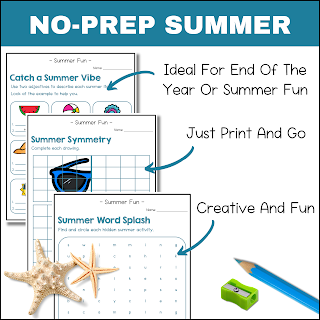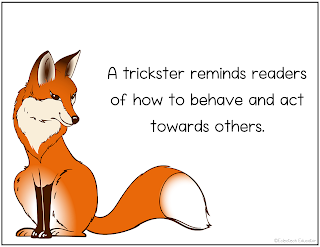☀️ Bring the Fun
The final weeks of school are magical—but let’s be honest, they’re also chaotic. Between field trips, assemblies, and sun-drenched daydreams, keeping students focused can feel like a major feat. That’s why I love using themed activities to channel all that summer energy into something both fun and meaningful.
End-of-the-year activities should absolutely be fun—but they can still pack a learning punch! One of my favorite ways to keep students engaged is with a beach-themed celebration. After all, most of our students are already dreaming about flip-flops and sandy shores—so why not bring the beach right into your classroom?
For the final stretch, we transform our week into a “classroom beach day” experience, complete with review activities in every subject, lighthearted games, and even a simple summer craft. Whether you are wrapping up the school year, prepping for summer school, or planning enrichment activities, a beach week is a fun and flexible way to make those last days count. Get ready to make waves in your classroom and inspire your students to dive into learning!
🌴 Classroom Beach Day Setup
To bring the beach to life, I decorate the classroom with plastic sand buckets, seashells, inflatable palm trees, and pink flamingos. I move the desks to the side and invite students to bring beach towels from home to sit on. I even set up a beach umbrella and perch on a lifeguard chair in a pair of sunglasses and my bright pink flower glasses - just to make it extra memorable! Plastic leis, straw hats, and tropical decor add the perfect summer touch. Nothing says “almost summer” like a classroom turned into a beach party.
🌞 Sunny Center Rotations
Once the beach is set, we dive into our learning centers. I post signs around the room for each station and give students a checklist to guide their progress. They rotate through the centers at their own pace, checking off what they have completed as they go. It’s a smooth, self-directed way to keep everyone engaged while giving students a bit of independence. The activities come straight from my Summer Fun Activities and Craft Packet—no prep needed!
I print and prep the twelve summer-themed activities from my packet and place them in colorful baskets labeled Beachside Math, Beach Brain Teasers, Tropical Tales, and Reading Reef. The names alone add to the excitement! Students visit the centers throughout the week, working through math, writing, just-for-fun puzzles, and picture books I have placed in the reading center. Because the math, writing, and puzzles are print-and-go, it is super low maintenance for me - but high engagement for them. Best of all, the beachy theme makes the learning feel like play!
🌞 No More Planning for the Final Stretch
When the final bell is nearly within reach and your iced coffee is working overtime, it is easy to feel torn between soaking up the last days with your class and scrambling to keep them engaged. That’s why this Summer Fun Activities and Craft Packet has become my go-to solution for the last week of school.
With puzzles, writing prompts, math review, and just-for-fun printables all wrapped in a no-prep package, this resource makes end-of-year planning feel like a breeze off the ocean. There is even a simple sandcastle craft to pull it all together into a keepsake booklet.
💛 Beach Snack
Add in a snack scene with blue gelatin (ocean), graham cracker "sand," and a few gummy sea creatures, and you have got a full beach vibe without leaving your room (idea courtesy of MomTrends).
Whether you are doing a full beach week or just need low-prep centers to fill the gaps, this packet brings the summer spirit without the planning stress. It gives you the space to enjoy your students, wrap up the year on a high note, and actually have fun!
✨ Click here to check it out on TpT and give yourself the gift of a smoother end to the school year. You deserve it!









































